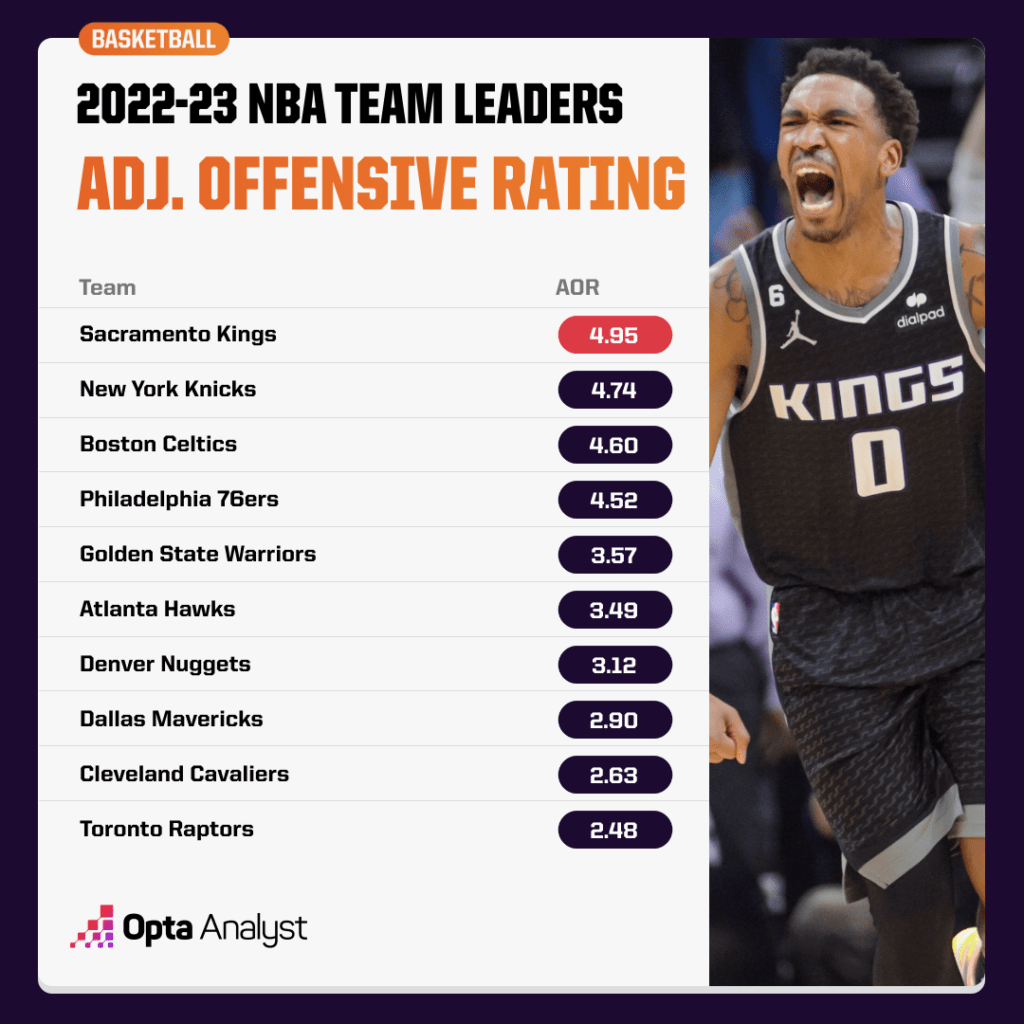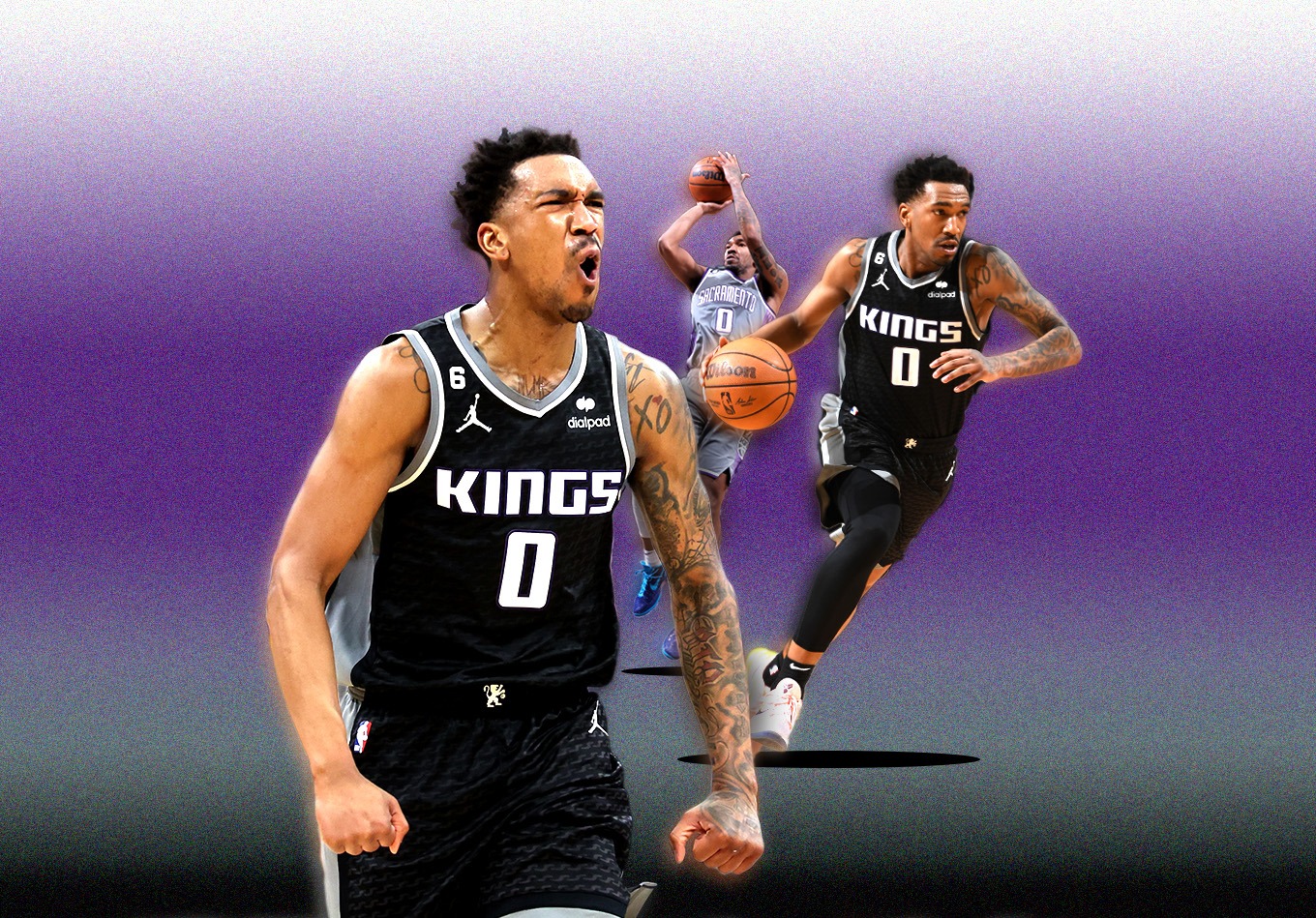In Game 1 of the highly anticipated first-round matchup between the Sacramento Kings and the reigning champion Golden State Warriors, both teams spent large parts of the third quarter in a box-and-one.
For those who aren’t aware, the “box-and-one” coverage is a zone alignment in which four defenders zone up the floor quite literally in the shape of a box while the fifth defender glues themselves to the player the defense is locked in on stopping.
The Kings, as you can imagine, used this formation to slow down two-time MVP Stephen Curry. That’s not the first time a team has done that to him, and it most certainly won’t be the last.
What was curious, though, is who the Warriors were using it on. It wasn’t Kings All-Stars De’Aaron Fox and Domantas Sabonis. It wasn’t Kevin Huerter. Heck, it wasn’t even rookie standout Keegan Murray.
It was the man some perceived to be a bust once upon a time. It was Malik Monk.
What’s going on here? How did Monk get this good?
And how does his presence change the dynamics of this series?
Born to Be a King
One mistake we often make as fans is underestimating how much a player’s value can be impacted by fit. On the wrong team, players can look like fringe rotation pieces. But on the right one, they can blossom into something else entirely.
That’s what’s happened with Monk in Sacramento. After years of toiling away on the Charlotte Hornets and Los Angeles Lakers, Monk found his ideal environment. And now, he’s become one of the most dynamic offensive bench players in the league (58th in offensive DRIP among players with at least 1,000 minutes).
Simply put, just like some are born to raise hell, Monk was born to be a member of the Sacramento Kings.
The two main ingredients of the Kings’ prolific offense (first in adjusted offensive rating) are speed and spacing.

That first component – speed – is Monk’s birthright. Sacramento’s Purple Flash blazes down the court like his real reason for playing basketball is to work on his 100-meter dash time. His first step is of the blink-and-you-might-miss-him variety. Only the masters in the art of lateral agility can hope to keep him in front of them.
But more than his physical speed, Monk thinks the game fast. A huge part of the Kings’ offensive success is their ability to push the pace and flow into plays before the defense has the chance to set up shop.
Monk is fearlessly indecisive (much like James Caan’s character in the movie “Thief”), and when the ball comes in his possession, he’s always ready to attack. In the playoffs, much like in combat on the battlefield, they say if you hesitate, you die.
When Monk’s out there, he doesn’t care whether he lives or dies.
- First Clip: Monk gets the ball off a miss and immediately recognizes the opportunity to push the pace for an easy transition layup.
- Second Clip: After missing a corner 3, Monk doesn’t sit there and sulk. Instead, he springs back into action – grabbing the offensive rebound, driving into the paint, and spraying the ball out to the Red Mamba himself.
That second key – spacing – is important because the more you can spread defensive players out, the harder it is for them to make rotations. And if they can’t make rotations, they can’t contest shots!
Monk is a great “spacer” in the sense that he can hit spot-up 3 (38% catch-and-shoot 3-point shooter, per NBA.com) and attack closeouts. But even more than that, Monk can create space for his teammates.
Since he’s such a dangerous shooter and driver, the Warriors have been sending two defenders at Monk when he has the ball, which creates an automatic 4-on-3 advantage for Sacramento.
The Series Implications
Over the first two games of this series, Monk has totaled 50 points, five 3s, nine rebounds and five assists on a shooting slash line of 50.0/45.5/94.4.
But more than his raw box score numbers, it’s the constraints he’s placing on the Warriors’ personnel and scheme decisions that are making all the difference.
We mentioned that only a select few have the physical tools to keep Monk in front of them. For the Warriors, those two gentlemen are Andrew Wiggins and Gary Payton II. The issue here is that, oftentimes, both of these guys need to be on the floor because Monk’s old college roommate shares his speed gene.
That means the Warriors are not only forced to put immense pressure on two players that are recently returning from long absences (Payton an injury, Wiggins a family matter), but that they also can’t play key contributors like Donte DiVincenzo and Jordan Poole (because they’ll get cooked by Monk and Fox) as much as they would like.
Through the first two games, DiVincenzo and Poole have only averaged 16 and 18.5 minutes per game, respectively. That’s a far cry from their regular-season averages of 26.3 and 30.0.
He’s also making life harder for Kevon Looney. Before Golden State was sending two defenders at Monk in Game 2, it was playing him in the less physically taxing drop coverage. Monk, of course, torched Looney in those sequences – using the runway created by drop to attack downhill.
This has forced the Warriors into more demanding defensive tactics. Looney has already looked noticeably more worn down this year than he was last season, so the extra wear-and-tear Monk is forcing onto his body could lead to the rapid depletion of his defensive reserves.
Despite core guys like Huerter, Murray and Barnes failing to leave a massive imprint, the Kings own a 2-0 lead as the series pivots over to the Chase Center. And while Fox, Sabonis and defensive pitbull Davion Mitchell all deserve some credit, Monk’s seismic footprint on these first two games needs to be recognized.
Hidden underneath the feel-good story that has been the 2022-23 Kings has been the subtle maturation of Monk. He’s no longer the disappointing lottery pick many people pegged him for coming into this season.
Not even close.
In fact, nowadays, he might just be the secret ingredient to collapsing the great Golden State Warriors dynasty.
